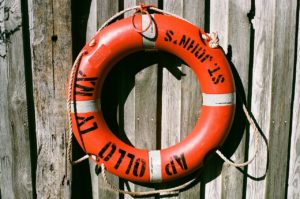Garden ponds, as all enthusiasts will agree bring so much joy and tranquility to a garden of any size. But, they can also be considered a hazard to young children particularly between the ages of 1 to 5 years old. Pond safety should be an important consideration. Visiting children are a higher risk as they are not likely to be aware of the potential dangers of water. If you have young grandchildren or entertain families with young children there are steps you can take to ensure their safety around your pond.

Children are easily drawn to water so even having neighbours with young children should be enough to alert you to putting pond safety measures in place. A drowning can happen within minutes of a parent being distracted.
Overgrown ponds are reported to be the most hazardous as the transition from ground to water is far less obvious.
Pond safety tips
- Site your pond where it is visible from the house and from the patio or outdoor seating area
- Consider building a raised pond
- For ground level ponds have a gently sloping edge to allow for an easy way of exiting the water
- Install a fence around your pond. If this is your preferred safety measure the fence will need to be higher than 1.1m with a lockable gate. The lock must be as high up as possible. The better option would be a gate with a spring attached should the gate accidentally be left unlocked. A gate which opens outwards will make it even more difficult to gain access
- Grow plants around the deeper side of your pond to deter children gaining access. Planting should not block visibility of your pond from view points
- Install an OFSTED approved metal pond guard or cover. Chicken wire won’t hold-up against the weight of a child so is not considered a safety measure and should be avoided at all costs
- Make sure the edging and boulders around your pond are firmly in place to avoid trips, slips and falls. The edging should be clearly defined
- Maintain your pond through the seasons and prune back aquatic plants so that at least a third of the pond surface is exposed to sunlight
The Child Accident Prevention Trust (CAPT) says drowning is one of the five principal causes of serious injuries for the under-fives in England. The charity’s campaigns manager, Pamela Prentice, says: “Most drownings involving two to three-year-olds happen in the home and garden.”
According to government figures, four out of five residential pond drowning incidents do not happen at the child’s own home. So while you may have a perfectly safe water feature, your neighbours, friends and relatives may not.
According to Froglife and many wildlife charities, filling-in ponds rather than putting safety measures in place should always be a last resort, since the damage this can do to wildlife communities locally can be enormous. Ponds are great for teaching children about wildlife and the different stages of the life-cycle of small creatures such as frogs unfold in natural surroundings.
Adults with young children in their care should be vigilant at all times – even a bucket of water is a potential hazard.





